The megamouth and great white sharks are some of the largest sharks patrolling the ocean. The great white has a reputation all to its own, but the megamouth is significantly rare and much less known. With a name like “megamouth,” one might think these sharks are huge predators, but they would be wrong! Today, we are going to explore the differences between these sharks and learn a bit about what makes them unique. Megamouth Shark vs Great White Shark; why are they special?
Comparing a Megamouth Shark and a Great White
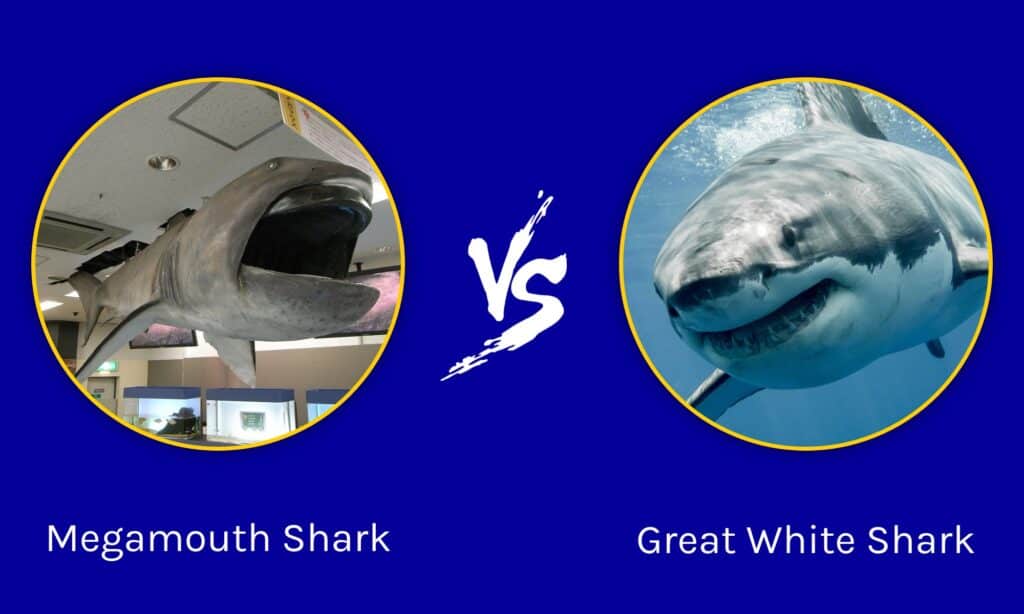
| Megamouth shark | Great white shark | ||
|---|---|---|---|
| Size | Length: 13-18 feet long Weight: Up to 2,679 lbs | Length: 11-20 feet long Weight: 4,200-5,000 lbs | |
| Diet | Filter feeders that eat plankton and krill. | Mostly seals, sea lions, and large fish. | |
| Distribution | Temperate oceans across the world. | Most offshore waters between 54 and 75°F. | |
| Habitat | Up to 15,000 feet deep. | Epipelagic waters. | |
| Human attacks | No human attacks. | The highest number of documented shark attacks. |
The 5 main differences between a Megamouth Shark and a Great White Shark
The main difference between a megamouth shark and a great white shark is that megamouth sharks are deepwater filter feeders, while great whites are surface-dwelling apex predators.
Megamouth and great white sharks are both some of the largest sharks in the ocean. In fact, they are both among the top 10 largest sharks alive today, with the whale shark being the largest. Between the two, however, the great white is generally larger, although megamouth sharks could be larger than a smaller great white.
Although close in size, little else between these sharks is as similar. One of the biggest differences between the two is diet. Megamouth sharks, despite what their looks would preclude, are filter feeders. They only eat plankton, krill, and anything small enough to get trapped in their mouths. Great whites, on the other hand, are well-known predators. They prefer large prey like seals, sea lions, and large fish.
Let’s look at these differences, plus a few more, in detail below!
Megamouth Shark vs Great White Shark: Size
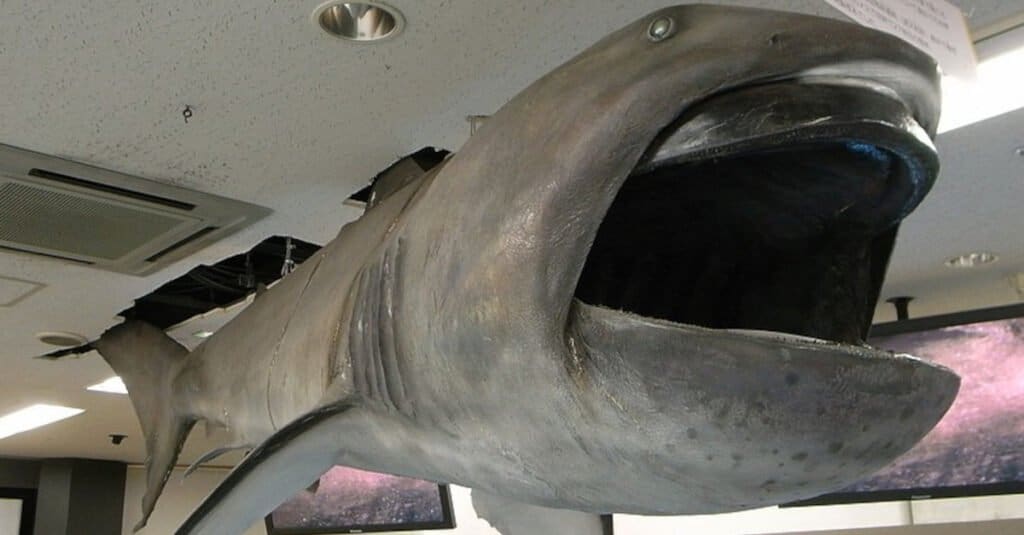
The megamouth and great white are very similar in size, but the latter can be larger.
©opencage / CC BY-SA 2.5 – License
The megamouth shark is one of the largest sharks in the ocean. In some instances, the megamouth shark is recognized as the third largest shark alive, behind the whale and basking sharks. This would place it above the great white, although the specimens recorded aren’t always larger. On average, megamouth sharks measure between 13-18 feet long and weigh up to 2,679 lbs.
Great white sharks are the largest predatory sharks in the ocean (if you don’t count the Greenland shark). These large predators can regularly reach 11-20 feet long and weigh 4,200-5,000 lbs. The largest megamouth sharks are longer, but the average great white is probably a bit heftier than the megamouth shark.
Megamouth Shark vs Great White Shark: Diet
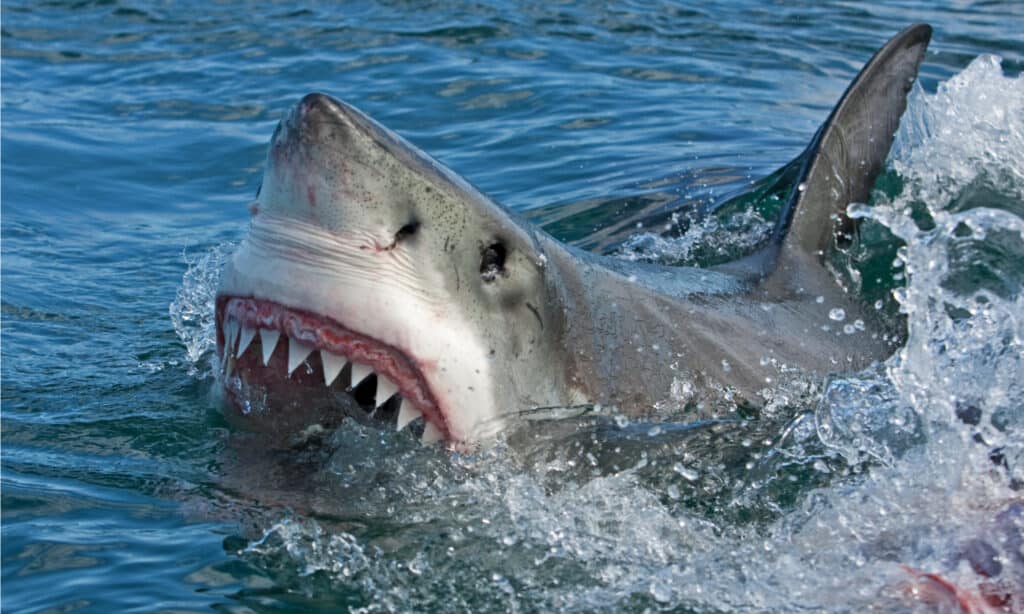
Great whites eat large prey like seals and sea lions.
©Martin Prochazkacz/Shutterstock.com
Great white sharks are famous for their diet of large creatures. These apex predators prefer things like seals and sea lions but can be pretty variable when they need to be. They have been seen eating large fish, rays, and even whale carcasses.
Megamouth sharks belong to a small group of sharks that filter-feed. These sharks inhale large amounts of water and run it over specialized pads near their gills. The pads trap small creatures like krill, plankton, and crustaceans. Only two other sharks are documented to be filter feeders, the whale shark, and the basking shark.
Megamouth Shark vs Great White Shark: Distribution
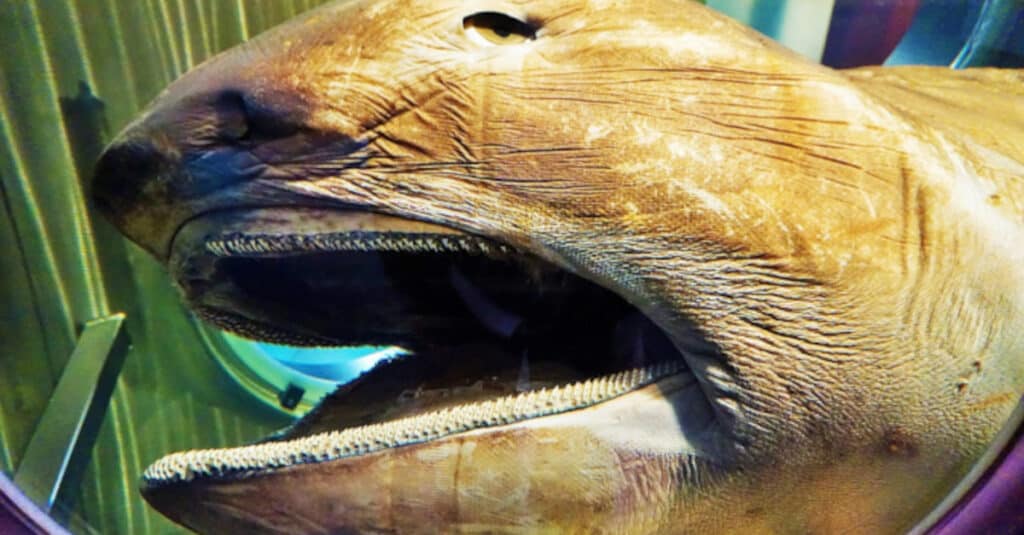
Megamouth sharks live in temperate oceans.
©GordonMakryllos / CC BY-SA 4.0 – License
The megamouth shark is a widespread shark that lives in most temperate oceans across the world. They are extremely rare to see due to the depths they usually stay live in. These sharks are not found in polar waters.
Great white sharks live in all the world’s oceans, save for the polar regions. They generally prefer waters between 54 and 75 °F and with plenty of large prey.
Megamouth Shark vs Great White Shark: Habitat
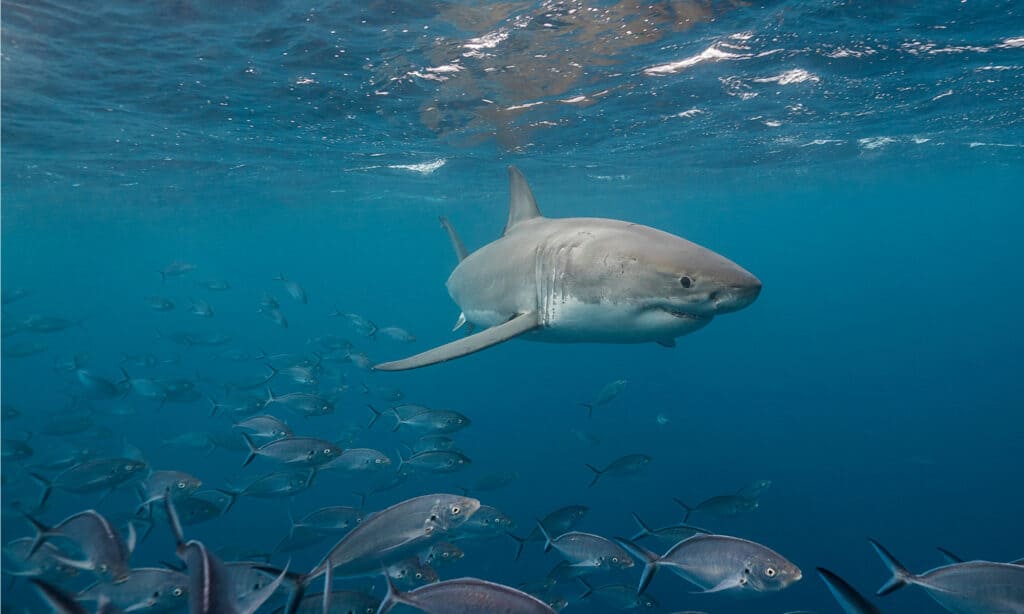
Great whites stick to the surface while megamouth sharks live in the depths of the ocean.
©wildestanimal/Shutterstock.com
Great whites are epipelagic sharks, meaning they reside in the uppermost layer of the ocean. Since they feed on seals and sea lions, they usually prefer regions with high population density like California, South Africa, and Australia.
The megamouth shark is known as one of the deepest-dwelling sharks around. They feed in vertical pillars that sometimes take them as deep as 15,000 feet. The depths they usually reside in make them extremely rare to witness, with less than 100 specimens ever found.
Megamouth Shark vs Great White Shark: Human attacks

Megamouth sharks don’t attack humans, but great whites do.
©J nel/Shutterstock.com
Great whites are well-known for their attacks, despite them being rarer than most people realize. The great white has the record for most attacks on humans. There have been a total of 354 attacks by great whites throughout documented history.
The megamouth shark is a filter feeder and doesn’t prey on large creatures. As such, they have never attacked humans, and no accidental bites have occurred.
The photo featured at the top of this post is © Stefan Pircher/Shutterstock.com
Thank you for reading! Have some feedback for us? Contact the AZ Animals editorial team.






